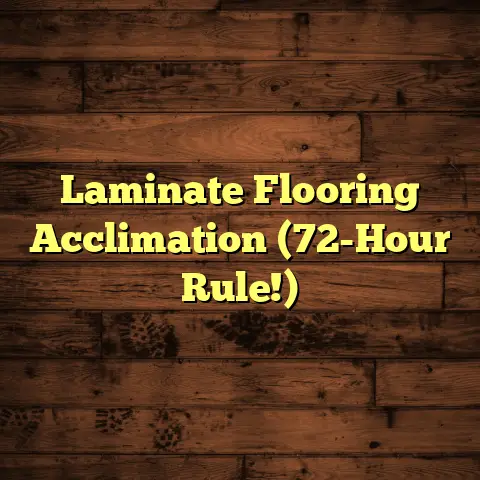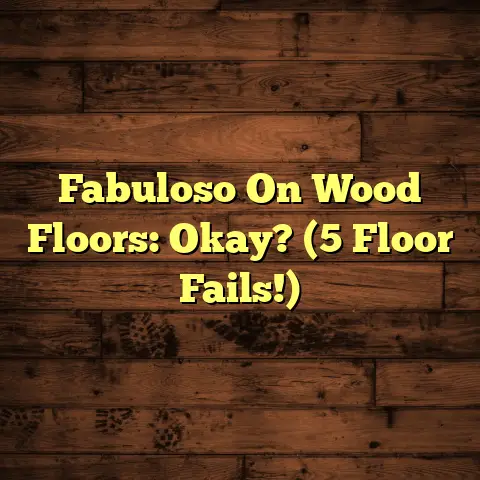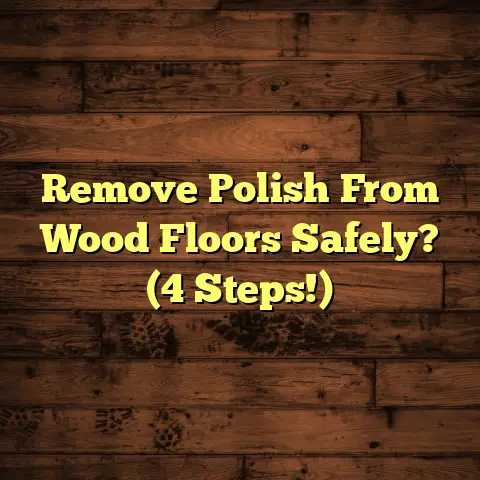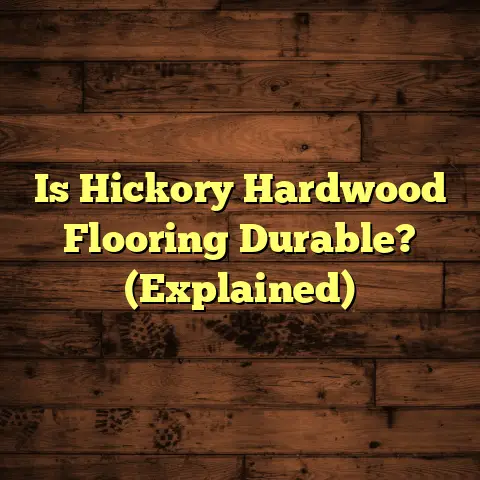the Cost of Refinishing Hardwood Floors in Mexico
Refinishing hardwood floors can breathe new life into your living space, enhancing both aesthetics and value. However, understanding the costs involved in this process is crucial for homeowners considering this option.
In this article, we will delve into the various factors that influence the cost of refinishing hardwood floors in Mexico, provide detailed cost breakdowns, and explore alternative flooring options.
Additionally, we will discuss the pros and cons of hardwood flooring, maintenance tips, and essential questions to ask contractors.
Overview of Major Cost Factors
The cost to refinish hardwood floors can vary significantly based on several key factors:
1. Area Size
The size of the area to be refinished plays a pivotal role in determining costs. Refinishing a larger space will naturally incur higher costs due to increased labor and material requirements.
- Small Areas: For spaces under 200 square feet, costs may be lower due to less time and material needed.
- Medium Areas: In the range of 200 to 400 square feet, costs will rise incrementally.
- Large Areas: Spaces larger than 400 square feet will see a more significant increase in costs, but economies of scale may apply, resulting in a lower per-square-foot cost.
2. Hardwood Type
Different species of hardwood come with varying price points. The choice of wood not only affects the cost but also the aesthetic appeal and durability.
- Common Species: Oak and maple are typically more affordable, ranging from $3 to $10 per square foot.
- Exotic Hardwoods: Woods like mahogany or teak generally cost more, ranging from $8 to $20 per square foot.
- Engineered Hardwood: This option can be less expensive than solid hardwood and ranges from $3 to $10 per square foot depending on the quality.
3. Labor Costs
Labor costs can vary based on location and the contractor’s experience. In Mexico, these costs may be lower compared to other countries, but it’s essential to hire skilled professionals for quality work.
- Hourly Rates: Professional flooring contractors may charge between $25 to $50 per hour depending on their experience level and the complexity of the job.
- Flat Rates: Some contractors may provide a flat rate based on square footage, which can range from $3 to $7 per square foot for labor.
4. Additional Considerations
Several additional factors can impact the overall cost of refinishing hardwood floors:
- Floor Removal: If old flooring needs to be removed, this will add to the cost. Removal costs typically range from $1 to $3 per square foot.
- Subfloor Replacement: If the subfloor is damaged and needs replacement, expect to pay between $1.50 to $3 per square foot for materials and labor.
- Material Grade: Higher-grade materials typically cost more but offer better durability and aesthetics. For instance, premium finishes can add $1 to $3 per square foot.
- Room Size/Layout: Complex layouts, such as those with multiple angles or tight spaces, may require more time and effort, thus increasing labor costs.
- Installation Type: The method of installation (nail-down, glue-down, or floating) affects labor and material costs. Nail-down installations are generally more labor-intensive and costly than floating floors.
Detailed Cost Breakdown
To provide a clearer understanding of what to expect when refinishing hardwood floors, here’s a detailed cost breakdown:
Average Costs
Refinishing hardwood floors involves several processes:
- Basic Refinishing (Sanding and Staining): $3 to $5 per square foot. This typically includes sanding down the existing finish and applying a new stain.
- Complete Refinishing (Includes Repairs): $5 to $8 per square foot. This option is ideal for floors that require more extensive repairs beyond just sanding.
- High-End Refinishing (Custom Stains or Finishes): $8 to $12 per square foot. This includes specialized finishes or techniques that enhance the beauty and durability of the floor.
Cost for Different Project Sizes
Estimating costs based on project sizes can help homeowners budget accordingly:
- Small Room (up to 200 sq ft): $600 – $1,000
- This could include a small bedroom or hallway where minimal work is needed.
- Medium Room (200 – 400 sq ft): $1,200 – $2,000
- A larger bedroom or living room that may require additional attention.
- Large Room (400 – 800 sq ft): $2,400 – $4,000
- Larger spaces like open-concept living areas or dining rooms will incur higher costs due to increased labor time.
- Whole House (1,500 sq ft): $4,500 – $9,000
- Refinishing an entire home can be a significant investment but can also dramatically improve property value.
Hardwood Types and Grades
The type of hardwood selected will greatly influence overall costs. Here’s a breakdown of popular options:
- Engineered Hardwood:
- Cost: $3 – $10 per square foot.
- Pros: More stable than solid hardwood; less susceptible to warping.
- Solid Hardwood:
- Cost: $5 – $15 per square foot (depending on wood type).
- Pros: Can be sanded and refinished multiple times; offers a classic look.
- Exotic Hardwoods:
- Cost: $8 – $20 per square foot.
- Pros: Unique appearances; often harder and more durable.
Comparison with Alternative Flooring Options
When considering refinishing hardwood floors, it’s also essential to compare costs with alternative flooring options. Here are several common alternatives along with their pros and cons:
| Flooring Type | Cost per Square Foot | Pros | Cons |
|---|---|---|---|
| Hardwood | $5 – $15 | Durable; aesthetic appeal; increases property value | Can be expensive; susceptible to moisture damage |
| Laminate | $1 – $4 | Affordable; easy installation; scratch-resistant | Looks less authentic; can’t be refinished |
| Vinyl | $2 – $7 | Water-resistant; versatile styles; comfortable underfoot | Can dent or scratch easily; lower resale value |
| Carpet | $2 – $6 | Soft underfoot; warmer feel | Difficult to clean; prone to stains; shorter lifespan |
The Long-Term Value of Hardwood vs Alternatives
While hardwood flooring has a higher initial investment compared to alternatives like laminate or carpet, it often proves to be more economical in the long run due to its durability and potential for refinishing. Homeowners should consider not only upfront costs but also long-term value when making their flooring choices.
Signs Your Hardwood Floors Need Refinishing or Replacement
Identifying when your hardwood floors need attention is crucial for maintaining their beauty and functionality. Here are some signs that indicate whether refinishing or replacement is necessary:
Signs That Indicate Refinishing Is Needed
- Scratches and Dents:
- Minor surface scratches can often be sanded out during refinishing. However, deeper dents may require more extensive work.
- Fading or Discoloration:
- If you notice significant fading or discoloration due to sunlight exposure or wear over time, refinishing can restore the original beauty.
- Surface Wear:
- If you can see the wood grain showing through the finish in high-traffic areas, it’s a sign that refinishing is needed.
- Dull Finish:
- A lackluster appearance indicates that the protective finish has worn off and needs refreshing.
Signs That Indicate Replacement Is Necessary
- Cupping or Warping:
- Severe warping often indicates moisture damage that cannot be remedied through refinishing.
- Extensive Damage:
- If you have large sections of the floor that are severely damaged due to water or pests, replacement may be necessary.
- Structural Issues:
- If your floor feels soft or bouncy underfoot, it may indicate issues with the subfloor or joists that require replacement.
- Multiple Prior Refinishes:
- Solid hardwood can only be refinished a limited number of times (usually 5-7). If it has reached this limit, replacement is likely needed.
When to Refinish vs. Replace
Consider refinishing if:
- The damage is superficial.
- You wish to change the color or finish without incurring high costs.
Opt for replacement if:
- The flooring is structurally compromised.
- There are extensive water damage or pest issues that cannot be fixed through refinishing.
Pros and Cons of Hardwood Flooring
Hardwood flooring comes with its own set of advantages and disadvantages that homeowners should consider before making a decision:
Pros of Hardwood Flooring
- Aesthetic Appeal:
- Hardwood floors offer timeless beauty and elegance that can complement any interior design style.
- Durability:
- With proper care, hardwood floors can last for decades, making them a worthwhile investment.
- Increases Property Value:
- Homes with hardwood flooring tend to sell at higher prices compared to homes with carpet or laminate flooring.
- Ease of Cleaning:
- Hardwood floors do not harbor allergens like carpets do, making them easier to clean and maintain.
- Versatility:
- Available in a wide variety of species, colors, and finishes, allowing homeowners to find exactly what fits their style.
Cons of Hardwood Flooring
- Higher Initial Cost:
- The upfront cost for hardwood flooring can be significantly higher than alternatives like laminate or vinyl.
- Susceptible to Moisture Damage:
- In areas with high humidity or moisture (like bathrooms), hardwood may warp or swell if not properly protected.
- Requires Regular Maintenance:
- To maintain its appearance, hardwood needs regular cleaning and periodic refinishing.
- Noise Concerns:
- Hardwood floors can be noisy compared to carpeted surfaces, especially in multi-story homes.
- Scratching and Dents:
- While durable, hardwood can still be scratched by pets or heavy furniture if not protected adequately.
Professional Installation vs. DIY
Deciding whether to hire a professional for installation or take on a DIY project is an important consideration when refinishing hardwood floors:
Cost Differences
- Professional Installation:
- Typically ranges from $3 to $7 per square foot for labor alone.
- Professionals bring expertise that ensures proper installation techniques are used.
- DIY Installation:
- While this can save money on labor costs, it requires tools and skills.
- Costs for tools (if you don’t already own them) can range from $200 to $500.
- Mistakes made during DIY installation can lead to further expenses down the line due to repairs needed.
Importance of Proper Installation
Proper installation is critical for several reasons:
- Even Surfaces:
- Properly installed flooring ensures even surfaces that are safe for walking.
- Longevity:
- Correct installation techniques lead to longer-lasting floors that do not warp or shift.
- Avoiding Future Costs:
- Taking shortcuts during installation can lead to costly repairs later on.
Questions to Ask Hardwood Flooring Contractors
When hiring a contractor for your hardwood floor refinishing project, it’s vital to ask the right questions to ensure you’re making an informed choice:
- What is your experience with hardwood flooring?
- Understanding their background can help gauge their expertise.
- Can you provide references from past clients?
- Speaking with previous clients can give insights into their work quality.
- What is included in your estimate?
- Clarify what services are covered in their quote (e.g., sanding, staining).
- How long will the project take?
- Knowing the timeline helps set expectations for completion.
- Do you offer a warranty on your work?
- A warranty provides peace of mind regarding workmanship and materials used.
- What type of finishes do you recommend?
- Understanding their recommendations can help you choose the right finish for your lifestyle and aesthetic preferences.
- Are you licensed and insured?
- Ensuring they have proper licensing and insurance protects you from liability issues during the project.
Hardwood Floor Care and Maintenance Tips
To maximize the longevity of your hardwood floors and keep them looking beautiful over time, consider these care and maintenance tips:
Regular Cleaning
- Sweep or Vacuum Regularly:
- Remove dirt and debris frequently to prevent scratches on the surface.
- Use a Damp Mop:
- For deeper cleaning, use a damp mop with a cleaner specifically designed for hardwood floors; avoid excessive water as it can damage the wood.
Use Area Rugs
- Protect High-Traffic Areas:
- Place area rugs in entryways and high-traffic zones to minimize wear and tear on your hardwood floors.
- Rug Pads:
- Use rug pads under rugs to provide cushioning and prevent slipping while protecting your floor beneath.
Humidity Control
- Maintain Indoor Humidity Levels:
- Aim for indoor humidity levels between 30% and 50% using humidifiers or dehumidifiers as necessary; this helps prevent warping or cracking of wood.
- Avoid Direct Sunlight:
- Use window treatments such as blinds or curtains to protect floors from direct sunlight that can cause fading over time.
Refine as Needed
- Plan for Periodic Refinishing:
- Depending on foot traffic and wear patterns, plan for refinishing every 7–10 years to maintain its appearance.
- Assess Regularly:
- Regularly inspect your floors for signs of wear; addressing issues early can extend their lifespan significantly.
Conclusion
Refinishing hardwood floors in Mexico can significantly enhance your home’s appearance and value while providing long-term benefits when properly maintained. By understanding various cost factors such as area size, labor costs, wood type, and additional considerations like subfloor replacement or removal of existing flooring, homeowners can make informed decisions about their projects.
In this comprehensive guide, we have explored everything from cost breakdowns for different project sizes and types of wood to comparisons with alternative flooring options like laminate, vinyl, and carpet. Knowing when to refinish versus replace your hardwood floors is essential for maintaining their beauty and functionality over time.
Whether choosing professional installation or embarking on a DIY project, proper care and maintenance will ensure your hardwood floors remain beautiful for years to come. By asking the right questions when hiring contractors and following care tips outlined here, homeowners can maximize their investment in hardwood flooring while enjoying its many advantages in their spaces.
By taking into account all these factors discussed throughout this guide—not only will you have a clearer understanding about what goes into refinishing hardwood floors—you’ll also feel empowered as you embark on this rewarding home improvement journey!





